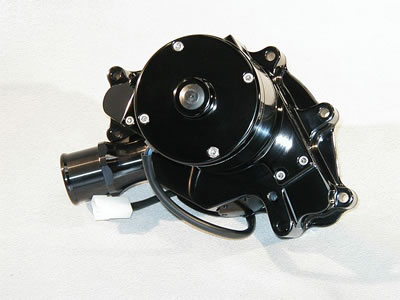What a goat rope this thread is

Can I play?
The cooling system is designed to handle the maximum heat output of the engine with some extra and with auto trans also provide some cooling for the trans as well. If it is in factory new condition, the max temp of the engine will be the temp at which the thermostat is fully open. Tstats rated for lower degrees will fully open sooner and the max engine temp will lower than higher rated Tstats. Having said that, the engine load dictates heat generated. IOW wide open throttle under load makes more heat than idle with no load, higher rpm makes more heat than lower rpm generally but now always due to load.
Under light loads and moderate ambient temp your cooling system should run just above the temp where Tstat starts to open. as load and ambient temp increases the Tstat opens further. If it reaches full open temp the rest of the cooling system should be able to let the temp rise no further. So if your 180 tstat is fully open at 200 degrees then it should get no hotter then 200 degrees with a properly functioning cooling system regardless of temp or load. The rub is when things get dirty, old or you add more power to the engine.
Why use a colder rated thermostat? Generally that would be for more power and resistance to detonation, which is why you typically see tuners go with lower rated Tstats.
Why would running colder then factory be bad? Tolerances in the engine are larger, things like ring seal is not as good and you get more blow-by into the crankcase wasting fuel and losing power, the blow by is re-run through the engine and contaminates components (that crud in your intake manifold for example). Bearing tolerances are larger and more oil is lost through gaps reducing oil flow to the rest of the engine. Engine oil is not able to burn off moisture as easily and leads to shorter oil life and circulates contaminates through the engine longer. Lower temps require more fuel and fuel economy will go down even if doesn't not appear in a miles per gallon calculation at the pump.
Clutch fan vs E-fan. Efans provide full fan speed continuously, clutch or direct mounted fans rely on engine speed. That's why an E-fan can really lower temps in traffic. Clutch fans will use HP all the time, even if the clutch was able to disengage the fan completely, spinning the clutch assembly takes power. So when the engine needs no fan cooling you are using some fuel just to turn the weight of the fan clutch. There's no free lunch with the E-fan either, the power to turn it has to come from somewhere and that is the alternator, when the E-fan is running the alternator is loading the engine. The question is how much? But again the E-fan advantage of only running when the set temp is reached means that it only runs when needed. As an example, I drove 3 miles to the grocery store, cold start to the parking lot at the store and the E-fan did not turn on. It was 85 degrees and sunny. Open roads with only a couple stops at intersections and the air flowing through the radiator was enough to keep the engine down below the point the E-fan would turn on. If I had driven for miles on the highway the E-fan would have been off and if I had a clutch fan then engine would be spinning that fan clutch at almost 3000 rpm the whole way taking more hp and using more fuel.
















